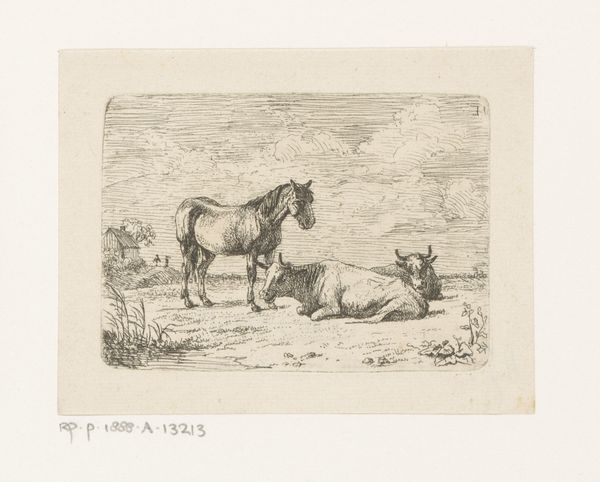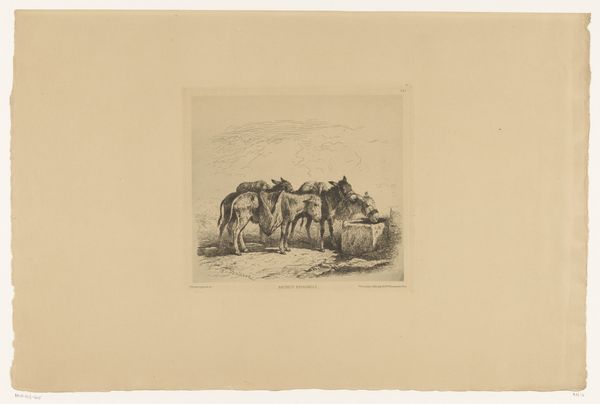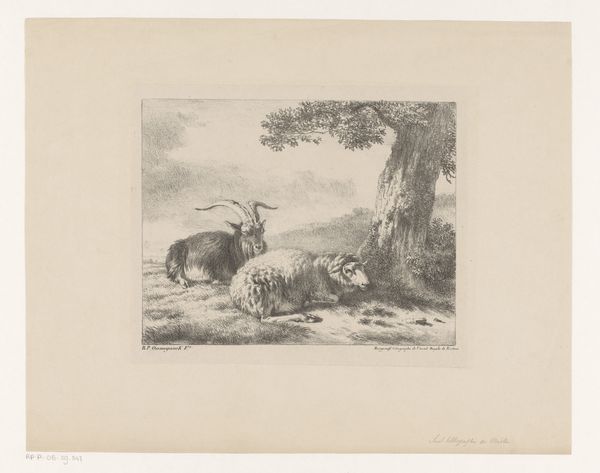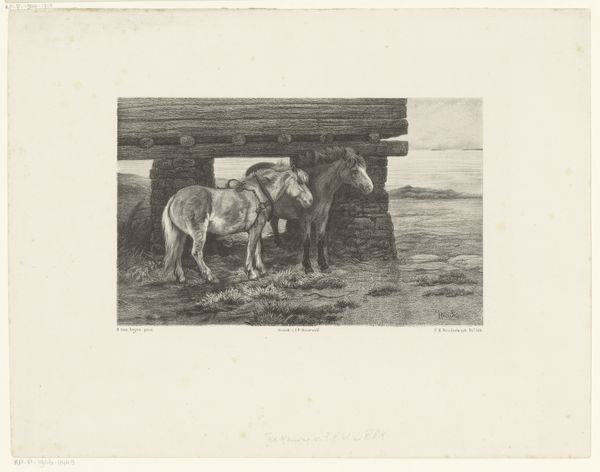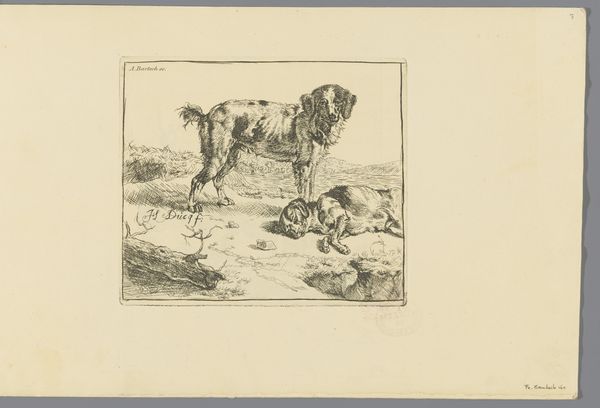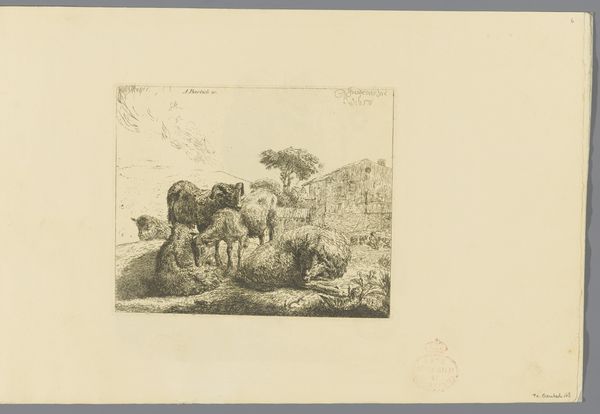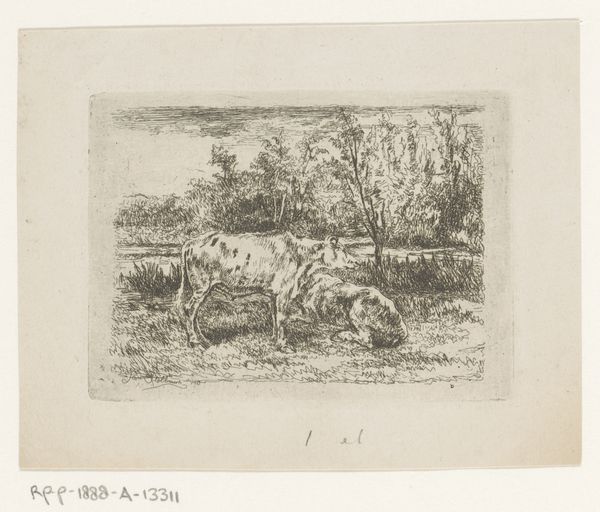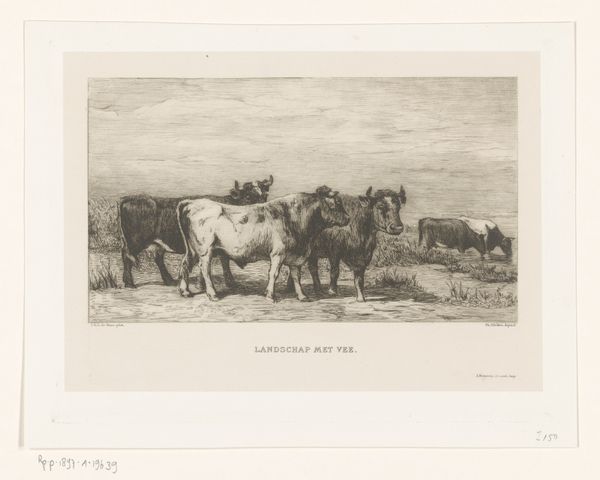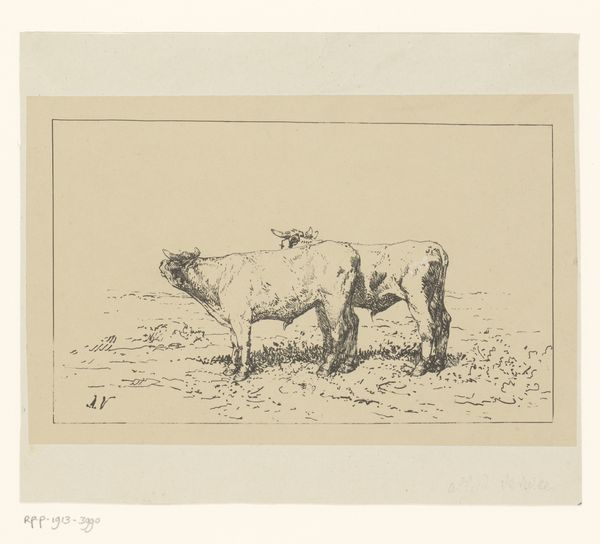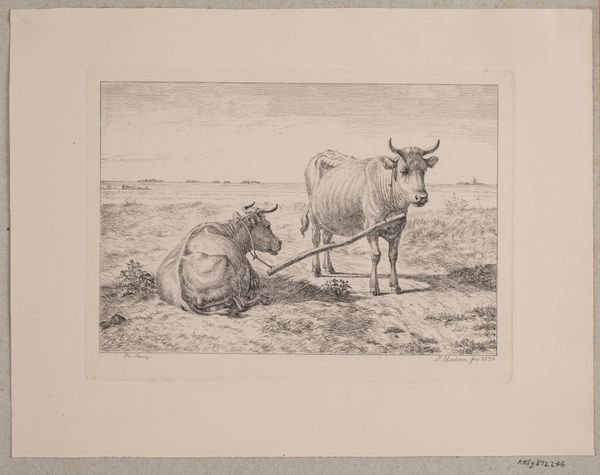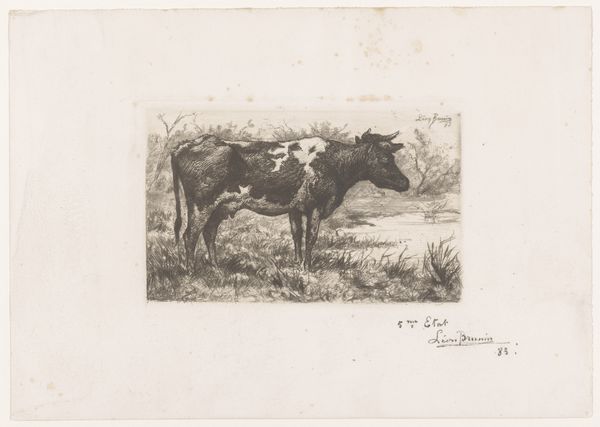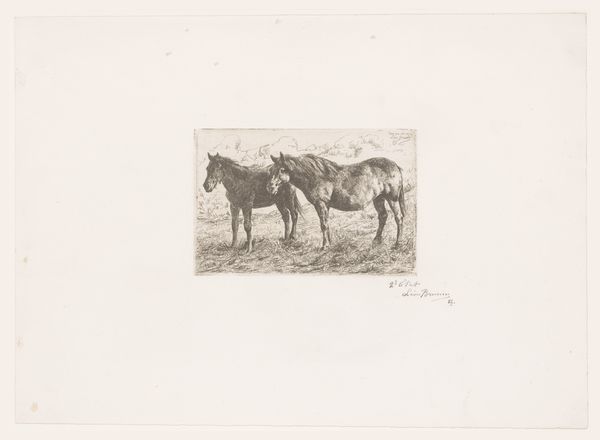
print, etching
# print
#
etching
#
old engraving style
#
landscape
#
figuration
#
realism
Dimensions: height 70 mm, width 95 mm
Copyright: Rijks Museum: Open Domain
Curator: Ah, this small work offers such a sense of quietude. Editor: It does. There's a striking stillness to the scene. Curator: What we have here is an etching by Hendrik Jozef Franciscus van der Poorten titled “Twee runderen,” or "Two Cows", created sometime between 1799 and 1874. Editor: Etching, right. So the process here involves coating a metal plate with wax, scratching the image into the wax, and then bathing it in acid, which bites into the exposed metal. The plate is then inked, and the print is made. Consider the labour invested in each of these lines. Curator: Yes, that’s a good point. Look how those precise lines evoke form and light, almost photographic. Beyond the skill in production, I find it interesting to think of what the imagery would signify for viewers. Cattle held immense value socially and economically in Dutch society. These representations helped further and secure such industry. Editor: Absolutely, you’re spot on there. But beyond that utilitarian aspect, is it possible these depictions offered something else to consumers? Was this just about reinforcing the social order? What about access to idealized depictions of pastoral life? How does this then relate to consumerism and status? Curator: Well, such prints were quite popular at the time; mass production definitely played a huge role. So, we could then examine printmaking as an industry feeding demand... Perhaps the subject matter of agricultural prosperity appealed to both rural and urban audiences alike. Editor: The Rijksmuseum possesses this one now. It serves as a window into a past society with complex dynamics and priorities, even when appearing simply to show two cows. Curator: Indeed, Hendrik van der Poorten gives us much more than a pastoral scene. It's an invitation to understand production, labor and consumption practices of Dutch society. Editor: And for me, I can appreciate how the subject of such print helps give insight into 19th century socioeconomic and agricultural narratives.
Comments
No comments
Be the first to comment and join the conversation on the ultimate creative platform.
